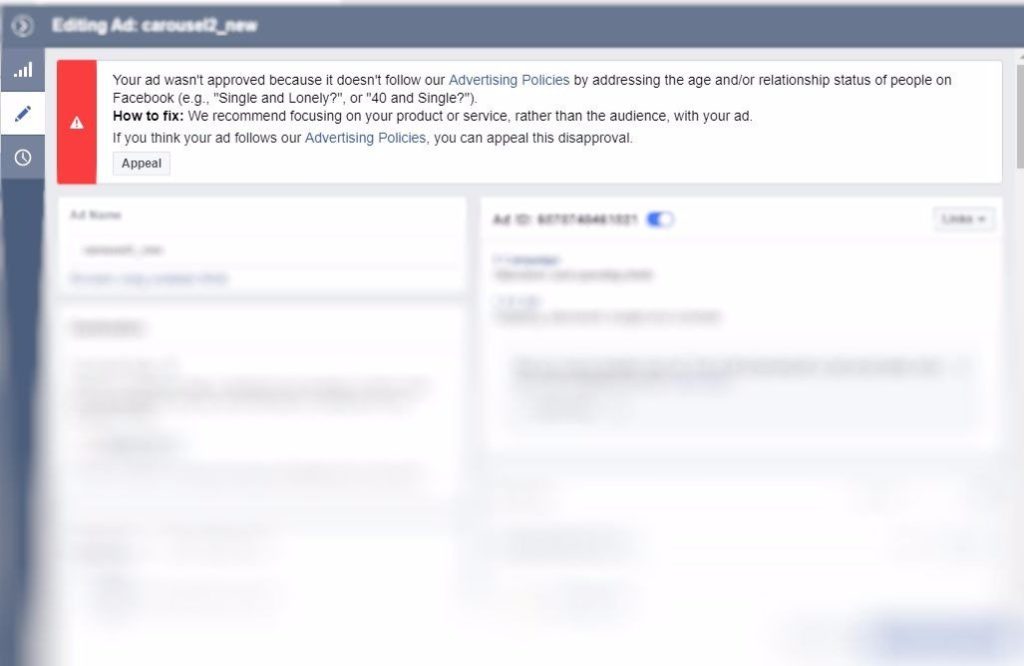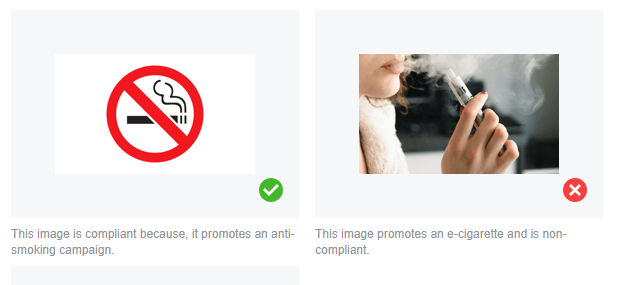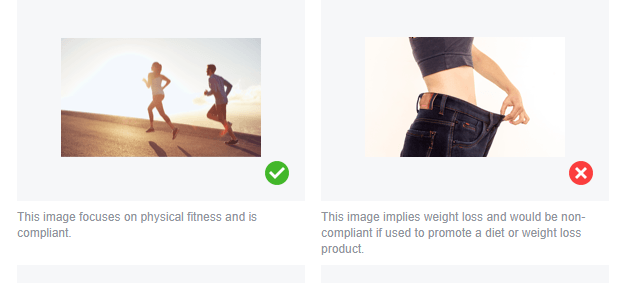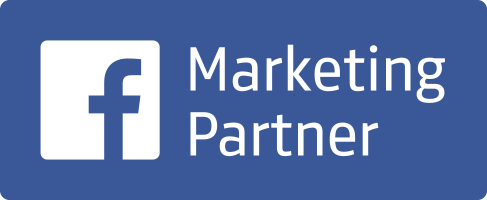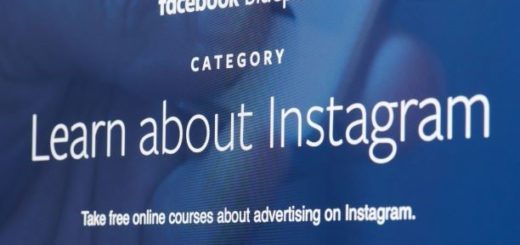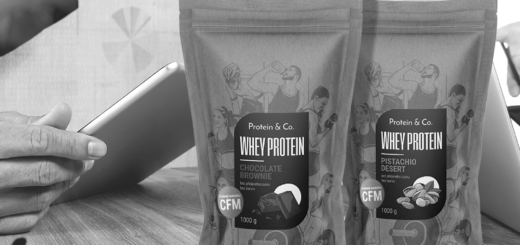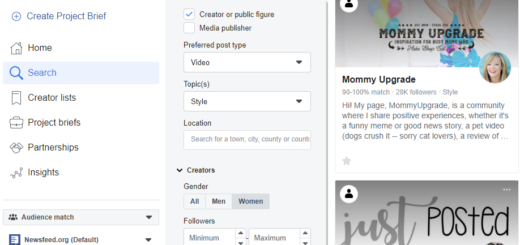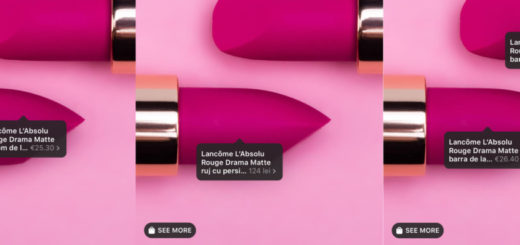
I bet everyone who has managed Facebook Ads had to deal with disapproved ads at least once. Or, in a better case, with those that took too much time to get approved. As you certainly know, Facebook algorithms reject all ads that violate its advertising policies. In this article, I want to share the most recent updates on Facebook´s policies in order to get your ads approved (quickly).
You might have experienced a situation that, although some of your ads were approved almost immediately after publishing, others are in the pending review status for a long time. In general, the approval process can take from a few minutes up to two days. Nobody knows how the Facebook algorithm works exactly, but we can predict it a little bit. It is probably a combination of automatic and manual analysis.
What factors actually influence the length of the approval process?
- Ad Account history: if you have been advertising for some time, you might have noticed that the approval process goes faster now than in the beginning. The reason is probably some kind of a “trust score” your account already has. The fewer disapproved ads you have had in the past (in combination with your ad spend) the bigger is the chance that you will get your ads approved now.
- Copy in your ads: in some specific regions, you have to choose the words wisely. Pay attention to the ads that deal with race, religion, family relationship otherwise your ads may be disapproved.
- Ad Creative: Facebook Algorithms are precise enough to detect too much nudity, logos that you do not have rights for, and other kinds of ad policy violations.
- Domain: your landing page is another subject of control. It must be directly related to the ad, be functional and can´t request software download in order to show its content. The longer you have been using a domain with no troubles, the shorter will the pending review period be.
- Targeting: in some areas, you have to be careful about your target group. For instance, if you advertise alcohol or betting agency you have to, of course, limit your targeting to people above 18 + (or according to the country law respectively).
Pro Tip: If you have been waiting for approval of your ad for too long, you can try to duplicate the ad. According to our experience, it often works.
It can happen that your ad is approved at first but rejected afterwards. Here we are talking again about the combination of automatic and manual analysis and your ad was rejected manually by a Facebook employee. If you want to know the reason for disapproval, go to the Ad level in Ads Manager and then click on “Edit Ad”. Then you can change your ad so it obeys the rules.
What is against the rules for advertising on Facebook?
You probably know that Facebook has quite an elaborate list of prohibited or restricted content. Remember that each country has its own rules, always according to the law of that country.
It is prohibited to promote adult content or products, except for those that deal with planned parenthood or contraception (of course you have to target people above 18).
Always be careful when you promote dating services. Before creating ads, you have to be whitelisted for such service, otherwise, your ads will be disapproved automatically. Then, you have to obey specific rules, such as targeting 18 +, or specific relationship status. In countries like Canada and the whole European Union, it is forbidden to use “Interested In” parameter, while on the other hand, this parameter is crucial to use anywhere else. Besides that, you have to always include only people that are “single” (you can use a combination single and unspecified), otherwise, Facebook will disapprove your ads.
Being on the whitelist is a must even when advertising online pharmacy. You can never promote prescription drugs or products that contain prohibited substances. The list of those can be found here.
You can promote alcohol as long as you target the appropriate age and follow the rules for text and creative. This also applies to gambling and online lottery.
What else to be careful about? Here is a quick list:
- Tobacco – except for anti-smoking campaigns or counselling for addicts,
- Drugs – except for counselling for drug addicts etc,
- Dangerous dietary supplements – keep in mind that the level of danger will be assessed by Facebook itself,
- Weapons, ammunition or explosives (except for exhibitions of weapons, etc.),
- Content promoting violations of third-party,
- Sensational content (meaning pictures or news that can be shocking),
- Ads promoting document forgery,
- Malware or spyware,
- Misleading or fake content (e.g. “before” and “after” photos),
- Multi-level marketing, penny auctions or instant loans.
Besides the above, Facebook also has community standards, which should guarantee to all its users that Facebook is a safe network and their personal data is protected. Any Ads’ content that could violate these policies will be disapproved (e.g. nudity, hate speech, violence…). Keep in mind that Instagram has its own Community Standards that are different from those of Facebook.
It is not only WHAT you promote, but also HOW
Many Facebook rules apply to how you can promote certain products or services. This is because Facebook wants to only promote content that is positive and not scary for the users. For instance, ads cannot show too much personal information, because users could think that their personal data is misused and provided to third parties.
What does it actually mean? Direct references to age, race, ethnicity, religion, belief, sexual orientation, disability, family or financial status, criminal record, union membership, or person’s name.
Here are some examples:
Approved vs. Disapproved
“New diabetes treatment” vs. “Do you have diabetes?”
“Our financial services will resolve any financial situation.” vs.“Are you broke? Look at our service”
“Get rid of all offences!” vs. “Were you accused of a crime?”
“Service for young people!” vs. “Service for people between 20 and 25
“Meet single people!” vs.“Meet other single people!”
In your text, you should always focus on the product or service itself rather than your target group.
As already mentioned, you should always be careful about “sensitive” content, such as alcohol or lottery. The texts in your ads should be as neutral as possible. In the case of alcohol, you can mention current sales on your website or point out the benefits (free delivery, wide offer, etc.). Last but not least – never forget about proper targeting relating to the age!
You should always try to avoid “big promises” such as “We will make your debts disappear” or “Significant weight loss in three days!” As already mentioned, your landing page is subject to control as well and it should always be consistent with your ad.
Another unfair practise is the so-called “fake buttons”. It is not possible to show “call-to-action” buttons that are misleading – for instance “play video” button which directs people to a standard landing page. If you add the “Shop now” button to a banner that leads to an e-shop, everything is fine.
Grammar and design matter
It can happen that your ad will be disapproved because of grammar mistakes or bad punctuation. Both grammar and punctuation should comply with Facebook Advertising Policies. Not to mention that profanity in ads is prohibited (together with “creative solutions” such as replacing letters with star signs.)
You might remember that Facebook used to have a “max. 20 % of the text” rule on Ad images. Although this is not an obligation anymore, too much text on the image can lead to under-delivery of your ad. Therefore we strongly suggest to still follow this rule. In an extreme case, your ads may not run at all. To check the amount of text in the image, you can use this tool.
A few tips and tricks …
- Always double-check your ads. Grammar, punctuation, the amount of text…all this matter!
- If you are in the “prohibited area” you can at least try to boost your posts. If the post is informative rather than “encouraging to shop”, it is likely to be approved.
- If your ad was disapproved and you are sure that everything is alright you can always appeal.
- Do not forget to teach your graphic designer and copywriter about the rules. That way you avoid misunderstandings and will save you time.

